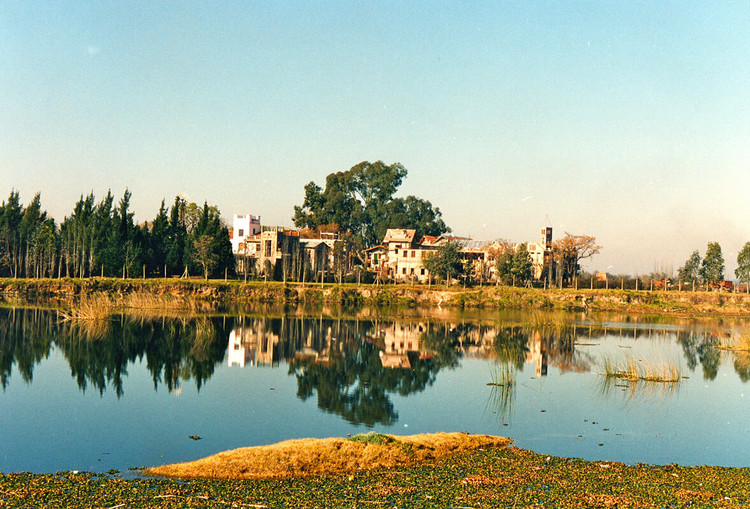
Nowadays, the role of architects exceeds the limits of construction, reaching fields that are often unthinkable, but which nonetheless demonstrate a close relationship with the profession. If we go back in time, the fact is that many buildings, houses, monuments and even cities have been built intuitively without urban planning or renowned architects. Undoubtedly, today's architects are facing a great challenge that goes beyond demonstrating our skills and knowledge and extends to other areas that involve us, but we still don't know it. So we ask ourselves, what will be the profile of the architect of the future?

The medieval village called Campanópolis is located about 30 km from the city of Buenos Aires, in González Catán, Matanza. It is presented as an example of architecture without architects and without inhabited buildings since, in fact, its constructions seem to have a more sculptural character, but with an architectural form. It is the first city with a medieval spirit in Latin America, constituting a historical, ecological, cultural and thematic park.


Antonio Campana, a supermarket businessman and producer of canned food, bought the 200 hectares of that rural area with plains, jungle-like forests, rivers, streams and lakes in 1977 to build a weekend house and an agricultural business. In 1985, after getting the dictatorship to return the land that had been expropriated by the CEAMSE (Ecological Coordination of the Metropolitan Area of the State Society) he was diagnosed with cancer and it was then that he decided to start building this very special village on land that for years had been a dumping ground.


Together with a group of masons that he put together with the neighbours of the area, Antonio designs and builds, without any architectural knowledge, a village with a mixture of styles in the middle of the woods that he himself planted, and breaks the moulds of construction, building the new on the basis of the old.

A complex where medieval-style constructions, curved passages with cobblestones and railway sleepers as if they had come out of a 15th-century European village, fairy tale houses, a Dutch windmill, a locomotive with wagons and a colonial chapel, etc., coexist. One of its most interesting sites is the Museum of Bars, where different types of wrought iron railings, hanging chandeliers, stained glass, antique objects and also pieces of art are exhibited.

The preservation of nature was one of the most important aspects taken into account when building it, as it is located in one of the largest nature reserves in the province of Buenos Aires, with more than 100,000 different trees and plant species. Campanópolis was built by recycling and reusing materials from demolitions.


Objects of great historical value were preserved, such as the bleachers discarded for the reconstruction of the Argentinos Juniors stadium, elements from the demolitions of the extension of 9 de Julio Avenue or 19th-century materials from the refurbishment of the Palermo Hippodrome and the Galerías Pacifico. At the same time, objects such as tiles on the walls, blind doors, gates that do not separate or divide spaces, stairs to nothingness itself, mezzanine floors made of gates, tiles placed in reverse, among others, were re-purposed.

But why was this village never inhabited? Perhaps the intervention of architects or town planners would have achieved the creation of habitable spaces with notions of comfort and harmony, or who knows, perhaps not, because it simply had not been designed for those purposes. What is certain is that recognising the most suitable place to place a window, a door or a piece of furniture, knowing the best orientation and/or ventilation for a home or learning how to size and distribute spaces, are necessary qualities when designing the spaces we inhabit.


Self-constructive methods and alternative production methods produce marvellous results, but on other occasions, they end up creating fantasy architecture that tends to invite more visitors than inhabitants. However, at the end of the day, it is still architecture leaving a legacy that exhibits the traces of a past, worthy of admiration, with many teachings and lessons to be learned.
Source:
- Christopher Alexander, El modo atemporal de construir.
- Myrna Leal, Campanópolis: La aldea que no necesitó de arquitectos.



















